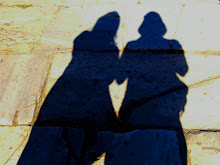 Pak Beng, Laos
Pak Beng, LaosJuly 21, 2007
N 19°53.565
E 101°07.783
Our goal for today was to get out of Oudomxay. After two days in the valley our throats were raw and couldn’t handle another pollution-filled day in the tiny town. We arrived at the bus station an hour before the 10:00 AM bus to Pak Beng, only to be told there weren’t any buses going to Pak Beng. We had a moment of shear panic, believing we were stuck in the town for another night, but quickly came to our senses and took control of the situation.
The ticket agent sat behind the counter breast feeding her baby and explained, “no more bus for Pak Beng today.” However, when Marc asked the driver of the Sawngthaew parked underneath the Pak Beng sign, he said “Yes, go to Pak Beng.” We went back to the ticket lady, still breast feeding; however, she wouldn’t budge—“no bus Pak Beng today.”
After getting the run-around for another ten minutes we discovered the bus we put our bags on was actually leaving for a town halfway between Oudomxay and Pak Beng, and the driver would most likely proceed to Pak Bang. Perfect, we figured we could catch a ride from there—anything to get us out of Oudomxay.
When the sawngthaew slowly crawled out of the bus station, there were a total of 27 passengers jam-packed into the truck. Five people in the cab, including the driver, 16 people crammed butt-to-butt on the bench seats, 3 people sitting in the middle of the bed on preschool sized plastic chairs, and 3 people standing on the bumper, holding on to the tailgate for dear life. I tried my best not to think what would happen if the driver rolled the truck with all this weight.
After two hours of the standard road torture (rain, wind, potholes, leg cramps, etc.) we made it to our halfway point. Everyone fell out of the bus, smiling and sorta congratulating each other on a trip well done, then slowly wandering off their own separate ways. Now we needed to figure out what bus may be going to Pak Beng.
 It appeared there were at least six others on a quest to conquer the same route to Pak Beng. Locals and a few Westerners alike were standing around pointing at each other inquisitively, “Pak Beng, you go?” “Yes, Pak Beng.” “Pak Beng? Pak Beng?” “Which bus Pak Beng, Pak Beng?” “I go Pak Beng, you go Pak Beng?” It was the standard chaos.
It appeared there were at least six others on a quest to conquer the same route to Pak Beng. Locals and a few Westerners alike were standing around pointing at each other inquisitively, “Pak Beng, you go?” “Yes, Pak Beng.” “Pak Beng? Pak Beng?” “Which bus Pak Beng, Pak Beng?” “I go Pak Beng, you go Pak Beng?” It was the standard chaos.After a good 20 minute Pak Beng inquisition, we all boarded yet another Sawngthaew and took off for Pak Beng. At this point we were pleased we didn’t just give up at the bus station and spend another night in Oudomxay; it appeared we were actually on our way to Pak Beng.
Shortly after taking off we stopped to pick up a Hmong family, a mother and her four children ranging in age from 6 months to 7 years. When they got in the truck the children were in awe of four huge, white, Westerners with pointy noses sitting directly across from them. As they sat speechless, the driver took off; zipping around corners at high speeds and tossing his passenger from side to side. Within minutes the entire family was vomiting from motion sickness; with the exception of the oldest boy.
At first the youngest girl barfed rice porridge all over her little brother’s shoulder and face. Next little brother spewed his lunch all over big sister and big brother. Then the mother finally got into the act and started vomiting off the back of the truck as she desperately clung to her infant; the sawngthaew continued at break-neck speeds. Then little sister started again… this time spewing porridge over the side of the truck and thankfully not on little brother again.
We felt horrible for the family. After barfing up their lunch, they sat still, without emotion, rice stuck to their faces and all over their clothes. After about an hour, the driver pulled over, seemingly in the middle of nowhere. The family slowly unloaded, not a word to anyone, and solemnly walked off into a remote village.
Many of the Hmong still live in the remote hills in Laos and are gradually being forced to
 integrate with the lowland societies by the government. We could only speculate that this may have been their first ride in a sawngthaew, let alone a gas powered vehicle. Thus, completely understandable why they reacted the way they did.
integrate with the lowland societies by the government. We could only speculate that this may have been their first ride in a sawngthaew, let alone a gas powered vehicle. Thus, completely understandable why they reacted the way they did.We finally made it to the small village of Pak Beng, found a place to stay and strolled through the village. One main street runs through town and dead ends into the Mekong River. The name of the village actually means mouth of the Beng, since the town is right at the junction of the Beng River and Mekong River.
We plan on spending two nights here before taking a boat trip up the Mekong River to Huay Xai, and then cross the border into Thailand.

No comments:
Post a Comment